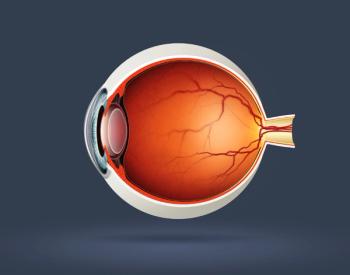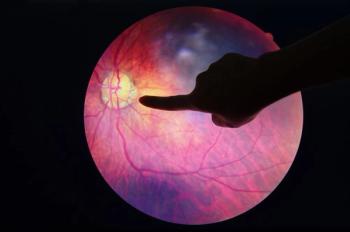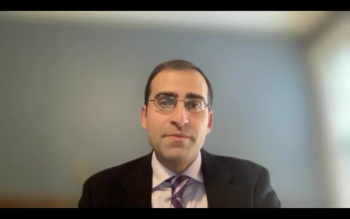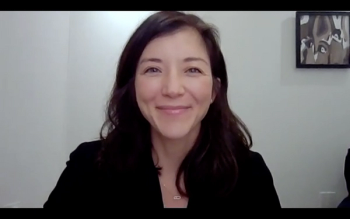
A decline in eye care utilization was found in older patients, with significant differences based on age, race, and ethnicity.

A decline in eye care utilization was found in older patients, with significant differences based on age, race, and ethnicity.

The results of a study showing improved functional vision and retinal sensitivity have implications for gene therapy in ophthalmological conditions, explained Michel Michaelides, MD, FACP, a consultant ophthalmologist and a professor of ophthalmology at the University College London Institute of Ophthalmology's Genetics Department.

At the American Academy of Ophthalmology's annual conference, Rona Z. Silkiss, MD, FACS, an oculoplastic surgeon and owner of Silkiss Eye Surgery, dived into how biologic therapies can be used to treat thyroid eye disease and what can be done to ensure patients have access to these treatments.

Michael N. Cohen, MD, a retinal surgeon at Wills Eye Hospital and Mid Atlantic Retina, describes the differences between wet and dry age-related macular degeneration (AMD) and how gene therapy could help treat the condition in the future.

Results from the pivotal PHOTON and PULSAR trials highlighted the success of 8-mg aflibercept every 12 or 16 weeks in patients with diabetic macular edema (DME) and neovascular age-related macular degeneration (nAMD).

Richard C. Allen, MD, PhD, FACS, an oculoplastic surgeon at Texas Children's Hospital and a professor at Baylor College of Medicine, spoke on how oculoplastic surgery in pediatric patients has changed at the American Academy of Ophthalmology's 2022 conference.

During a lecture delivered at the American Academy of Ophthalmology (AAO) annual meeting, James Madara, MD, CEO of the American Medical Association, discussed 3 areas in ophthalmology care that required innovation to effectively push care into the 21st century.

Posters presented at AAO 2022 found that family medicine doctors and artificial intelligence (AI) were able to screen patients for diabetic retinopathy (DR) effectively, although false negatives in AI need to be improved.

Posters presented at the American Academy of Ophthalmology 2022 annual meeting show that the treat-and-extend (T&E) regimen was effective in managing neovascular age-related macular degeneration (nAMD), which makes adherence to treatment vital for long-term outcomes.

Advances in imaging and data science are changing the nature of retina practice, and retina specialists need to stay on top of these, said Michael F. Chiang, MD, director of the National Eye Institute (NEI), who also discussed some of the current research the agency is conducting into artificial intelligence (AI) and telemedicine.

Gene therapy can be used to treat retinitis pigmentosa, an inherited eye disease, and there is likely to be an increase in approved gene therapies for ophthalmic conditions, explained Michel Michaelides, MD, FACP, a consultant ophthalmologist and a professor of ophthalmology at the University College London Institute of Ophthalmology's Genetics Department.

The presentation focused on the Protocol AC trial, which considered whether step therapy had an impact on visual outcomes for patients starting on bevacizumab and switching to aflibercept later.

The ophthalmology practice of the future will need to manage patients more efficiently and that means incorporating more technology, said Ravi Goel, MD, spokesperson for the AAO and ophthalmologist at Regional Eye Associates in New Jersey.

Posters presented at the American Academy of Ophthalmology 2022 annual meeting showed that patients with retinal vein occlusion (RVO) are most likely older with higher diastolic blood pressure, and they require prompt treatment to help manage the disease.

Speakers at a panel at the American Academy of Ophthalmology (AAO) 2022 conference spoke about future treatment options for patients in both minimally proven operations and in-office retina surgeries.

Ophthalmology is image heavy, which has made the specialty amenable to telemedicine and the implementation of artificial intelligence, said Grayson Armstrong, MD, medical director, ophthalmic emergency services at Massachusetts Eye and Ear, and instructor in ophthalmology at Harvard Medical School.

During the Parker Heath Lecture at the American Academy of Ophthalmology (AAO) annual meeting, James Madara, MD, CEO of the American Medical Association (AMA), will discuss the 3 arcs of the AMA’s strategic framework and the innovation that needs to occur.

The American Academy of Ophthalmology (AAO) annual meeting will present cutting-edge topics on retinal disease, as well as feature a presentation from historian Doris Kearns Goodwin, said Ravi Goel, MD, spokesperson for AAO and ophthalmologist at Regional Eye Associates in New Jersey.

The American Academy of Ophthalmology (AAO) will hold its conference in person in Chicago and online from September 30 to October 3, 2022.

Posters presented at the American Academy of Ophthalmology 2021 annual meeting showed that even patients with mild inflammation with their thyroid eye disease benefitted from teprotumumab and that real-world adherence was consistent with the pivotal clinical trials.

Among many presentations during a hot topics session at the American Academy of Ophthalmology 2021 annual meeting, speakers discussed the first FDA approved therapy for thyroid eye disease and the latest in enhanced monofocal intraocular lenses (IOLs).

David Ramsey, MD, PhD, MPH, explains findings from a study on telehealth use among patients with diabetes in Massachusetts.

James Auran, MD, a professor of ophthalmology at Columbia University Irving Medical Center and president of the American Society of Ophthalmic Trauma, outlines the benefits and challenges of transferring ophthalmic care to outpatient facilities.

Anne Barmettler, MD, an associate professor of ophthalmology, visual sciences, and plastic surgery at Montefiore Medical Center discusses patient feedback on Tepezza (teprotumumab) for thyroid eye disease.

The field of ophthalmology had already been moving toward telehealth and artificial intelligence (AI) before the COVID-19 pandemic, but these changes are being accelerated now, making it crucial for ophthalmologists to learn to adapt.

Leon Herndon Jr, MD, a glaucoma specialist, ophthalmologist, and professor of ophthalmology at the Duke University Eye Center, discusses how a patient’s age can affect their glaucoma symptoms and treatment.

Aaron Lee, MD, an associate professor of ophthalmology at University of Washington, describes how artificial intelligence (AI) is used in ophthalmology now and how it could be utilized in the future.

Emergency department utilization for nonemergent ophthalmic conditions is on the rise in the United States, but presentation types vary significantly based on patient demographics, according to 2 posters presented at the American Academy of Ophthalmology (AAO) 2021 meeting.

Victoria Ly, MD, MPH, explains the results of her study on follow-up among students in Arkansas who failed their vision screening tests.

Judith Lavrich, MD, and Jordan Hamburger outline findings from their research on virtual school and children's eye health.

259 Prospect Plains Rd, Bldg H
Cranbury, NJ 08512
© 2025 MJH Life Sciences®
All rights reserved.
